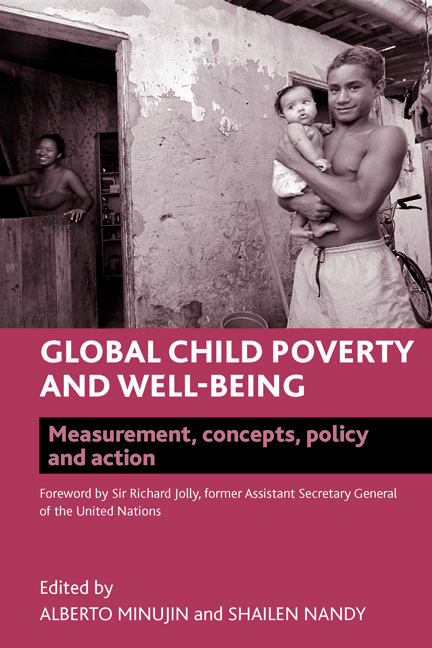two - Child rights, child survival and child poverty: the debate
Published online by Cambridge University Press: 07 September 2022
Summary
Introduction
It is estimated that over eight million children under the age of five in developing countries die each year, mainly from preventable causes (Black et al, 2010). In approximately half of these deaths, malnutrition is a contributory cause (UNICEF, 2002). However, the World Health Organization (WHO) has argued that seven out of ten childhood deaths in such countries can be attributed to just five main causes or their combination. In addition to malnutrition (WHO, 2002), these causes are pneumonia, diarrhoea, measles and malaria. Many of these deaths could be prevented using readily available medical technologies at comparatively little cost (Jones et al, 2003; Tomkins, 2003). While medical interventions can, in principle, prevent most young children from dying early they cannot remove the underlying causes of poor health. The reasons why such large numbers of children die are linked directly to the severely deprived or absolutely poor living conditions in which 30% of the world's children live (UNDP, 1998; UNICEF, 2004). For example, almost a third of the world's children live in squalid housing conditions, with more than five people per room or with mud flooring. Over half a billion children (27%) have no toilet facilities whatsoever and over 400 million children (19%) are drinking from unsafe open water sources (for example, rivers, lakes, ponds) or have to walk so far to water that they cannot carry enough to meet minimum health requirements (Gordon et al, 2003; Nandy and Gordon, 2009). Thus, eliminating extreme poverty is the key to improving global child survival rates, particularly over the long term. This chapter seeks not to address the policies required to end extreme poverty, as it is our contention that the scientific knowledge required to achieve this is widely documented (Gordon, 2002). Instead, attention is focused on the potential of human rights frameworks to create mechanisms of accountability that will hopefully effect meaningful change (Pemberton et al, 2007).
History bears witness to the potential of such an approach. Over the course of the 20th century, most advanced industrial societies developed models of social citizenship, a set of social rights (rights to healthcare, education, social security and so on) that guaranteed a minimum standard of living.
- Type
- Chapter
- Information
- Global Child Poverty and Well-BeingMeasurement, Concepts, Policy and Action, pp. 19 - 38Publisher: Bristol University PressPrint publication year: 2012
- 2
- Cited by

